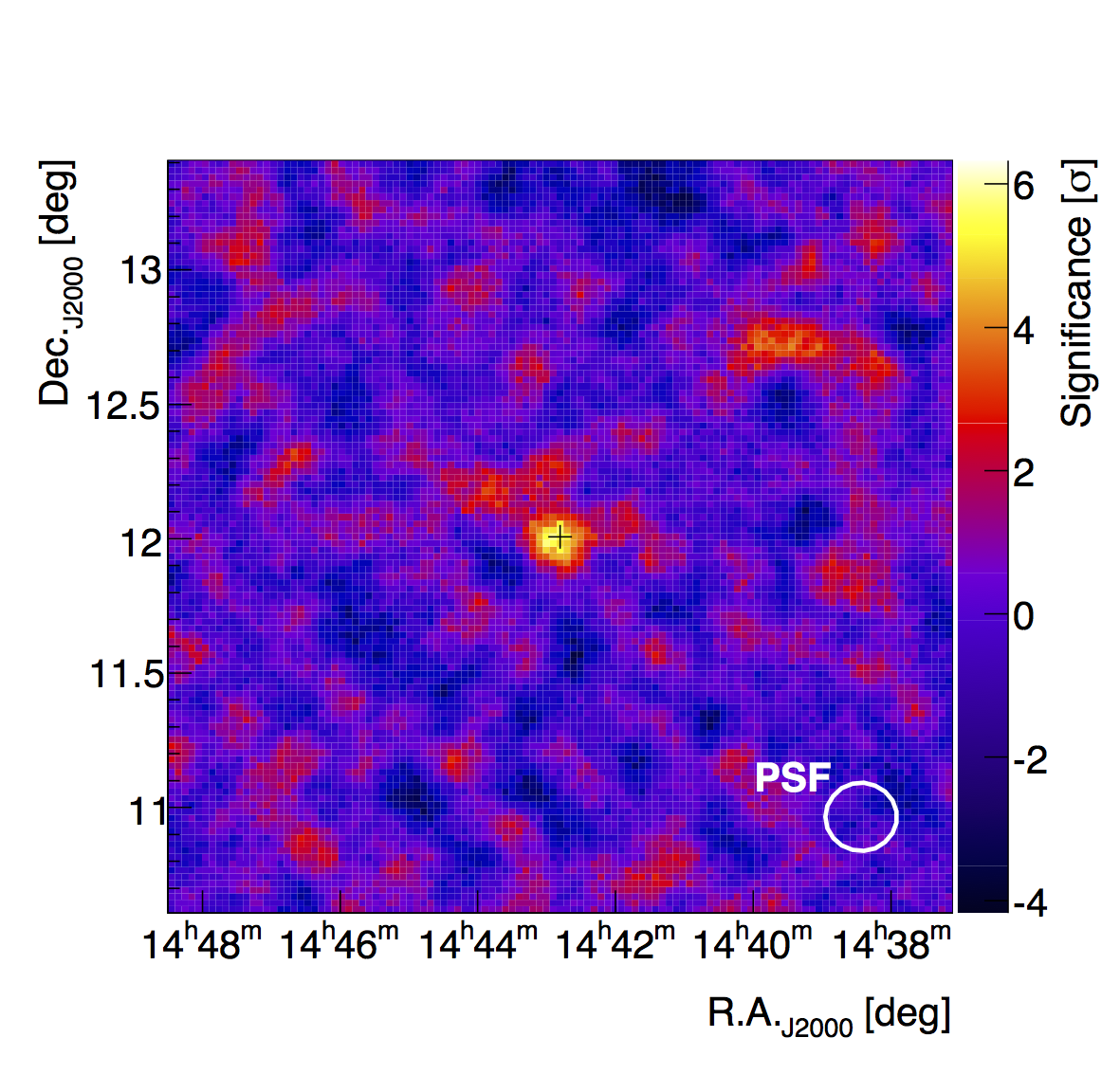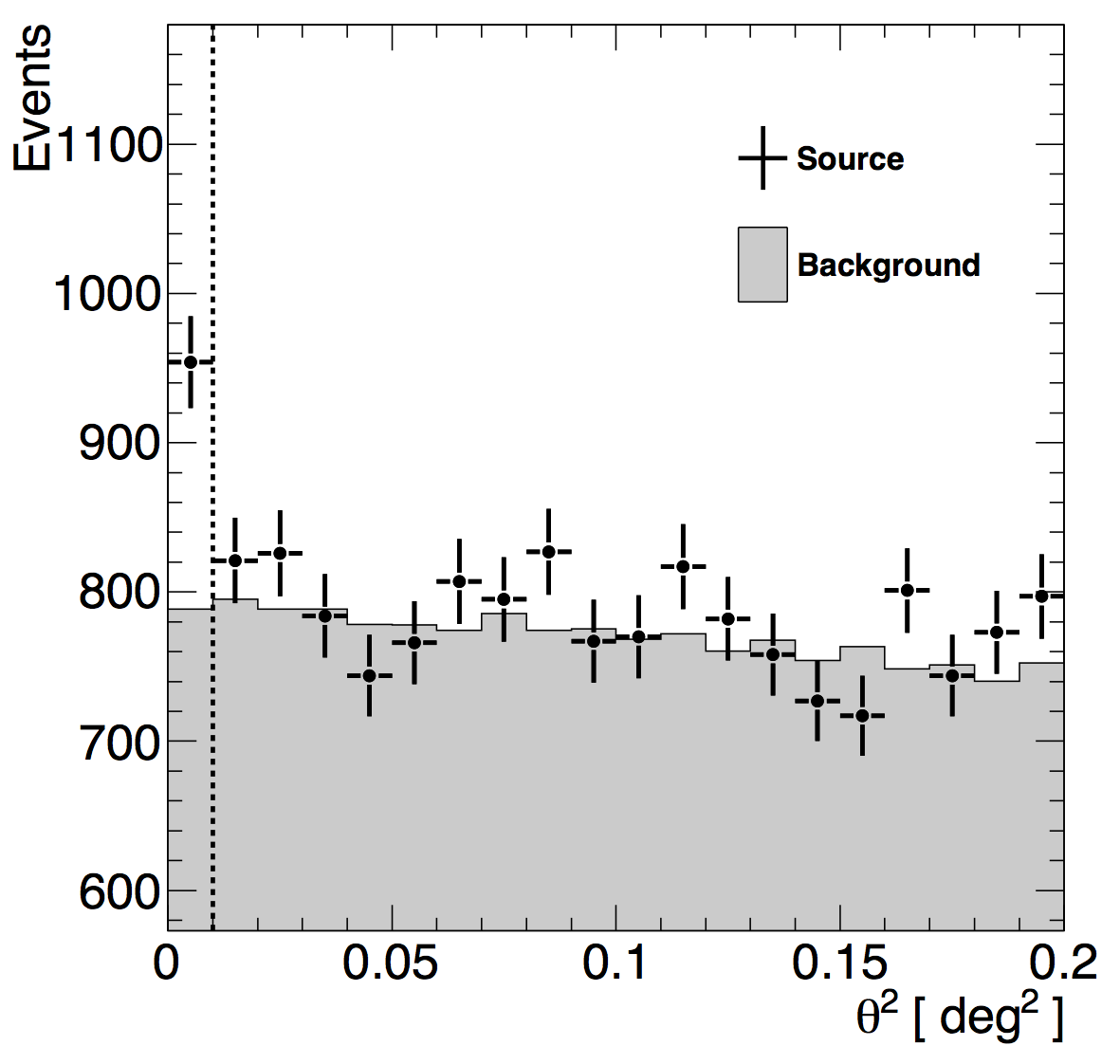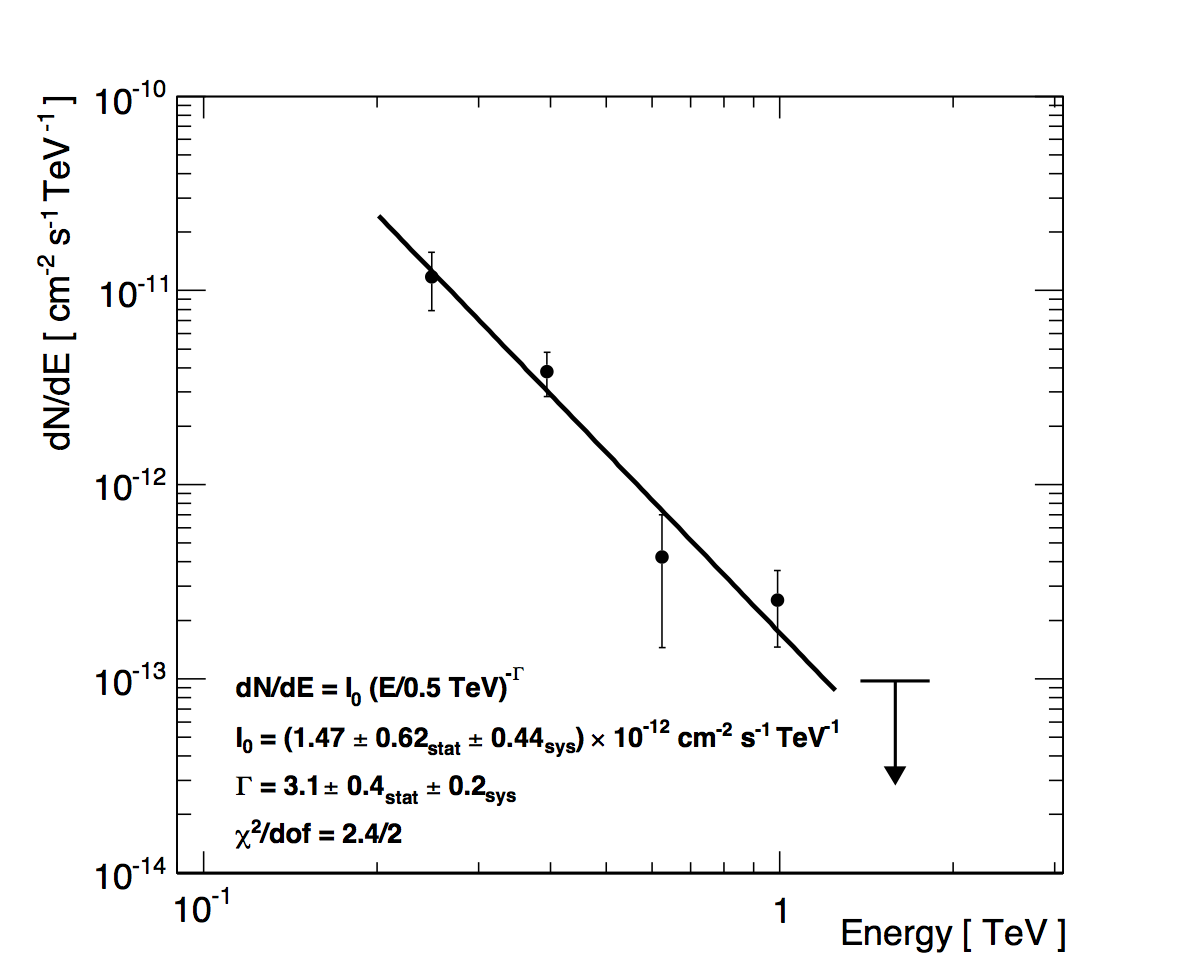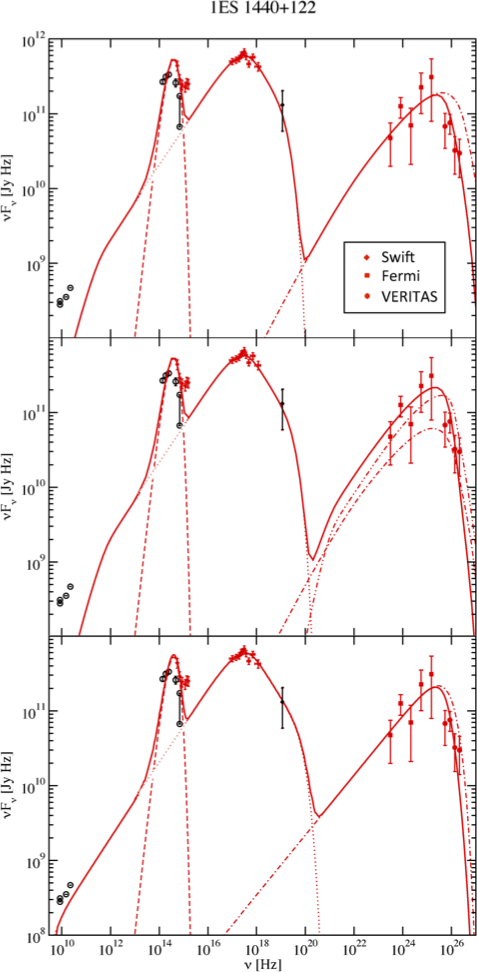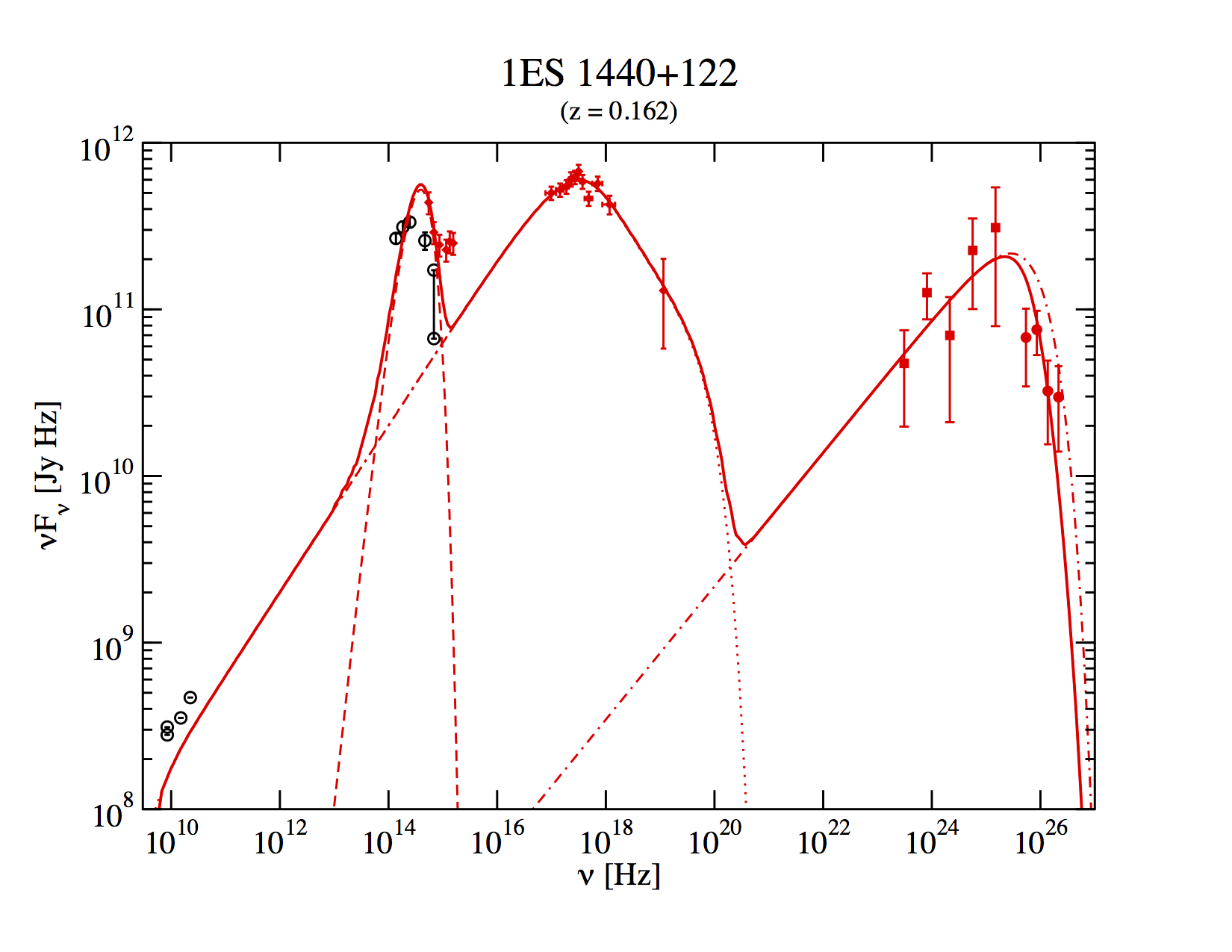
SED of 1ES1440+122 with a hadronic model fit to it; for details, see Figure 4 below.
Reference: S. Archambault et al. (The VERITAS Collaboration), MNRAS 461: 202, 2016
Full text version
ArXiv: ArXiv:1608.02769
Contacts: Jon Dumm
With deep observations, VERITAS was able to detect very-high-energy gamma rays from the blazar 1ES 1440+122 for the first time. The blazar, at redshift 0.163, is quite distant with the spectrum evidently affected by absorption on the extragalactic background light. Accompanied by data from the Fermi-LAT and Swift-XRT instruments, we were able to construct three viable scenarios for the origins of the gamma rays. The simplest scenario, a synchrotron self-Compton model, is able to reproduce the observations. We cannot yet uniquely separate this scenario from models with additional free parameters such as an external radiation field or a hadronic component.
FITS files:
Figures from paper (click to get full size image):
Figure 1: VHE significance map of the region around 1ES 1440+122 from the VERITAS observations. The map has been smoothed using events within a radius of 0.1o. The black cross marks the location of 1ES 1440+122 as reported in the SDSS. The VERITAS angular resolution is indicated by the white circle.
Figure 2: Distribution of θ2 for the source (cross) and background regions (shaded region; normalised) from the VHE observations of 1ES 1440+122. θ is the angular distance between the source and the reconstructed event location. The vertical dashed line indicates the ON region.
Figure 3: VHE spectrum of 1ES 1440+122 derived from the whole VERITAS data set. An upper limit with 99% confidence level is shown above the last significant spectral point.
Figure 4: SED of 1ES 1440+122 using quasi-simultaneous Swift, Fermi -LAT and VERITAS data (red points), archival data (black points), and models (lines). The synchrotron component (dotted) and the total fluxes after correction for EBL absorption (Franceschini et al. 2008) are shown for every case (solid). The host galaxy was modelled as a blackbody (dashed). Top panel: SSC model with inverse-Compton component (dot-dashed) shown. Middle panel: EC model with self-Compton (dot-dashed) and inverse-Compton components (dot-dot-dashed) shown. Lower panel: Hadronic model with hadronic component (dot-dashed) shown.

